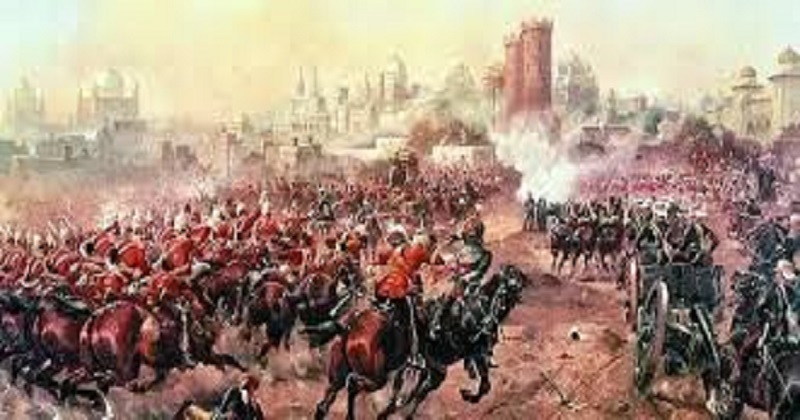
By the first half of the 19th century, the East India Company had brought major portions of India under its control.
One hundred years after the Battle of Plassey, anger against the unjust and oppressive British Government took the form of a revolt that shook the very foundations of British rule in India.
While British historians called it the Sepoy Mutiny, Indian historians named it the Revolt of 1857 or the First War of Indian Independence. The Revolt of 1857 had been preceded by a series of disturbances in different parts of the country from the late eighteenth century onwards.
The Sanyasi Rebellion in North Bengal and the Chunar rebellion in Bihar and Bengal broke out in the late eighteenth century. There were several peasant uprisings in the mid- nineteenth century, the most important of which were those by the Moplah peasants of the Malabar and the Faraizi movement by Muslim peasants in Bengal.
The first half of the nineteenth century also witnessed a number of tribal revolts. In this context, mention may be made of the rebellions of the Bhils of Madhya Pradesh, the Santhals of Bihar and the Gonds and Khonds of Orissa. However, all these disturbances were localized. Although serious and, in some cases, long drawn, these did not pose any serious threat to the existence of the British Empire.
The Revolt of 1857:
The first expression of organised resistance was the Revolt of 1857. It began as a revolt of the sepoys of the Company’s army but eventually secured the participation of the masses. Its causes lay deeply embedded in the grievances that all sections of Indian society nurtured against the British rule.
Political Causes:
The political causes of the revolt may be traced to the British policy of expansion through the Doctrine of Lapse and direct annexation. A large number of Indian rulers and chiefs were dislodged, thus arousing fear in the minds of other ruling families who apprehended a similar fate.
Rani Lakshmi Bai’s adopted son was not permitted to sit on the throne of Jhansi. Satara, Nagpur and Jhansi were annexed under the Doctrine of Lapse. Jaitpur, Sambalpur and Udaipur were also annexed. Other rulers feared that the annexation of their states was only a matter of time. The refusal to continue the pension of Nana Saheb, the adopted son of Baji Rao II, created hostility among the ruling class.
Moreover, the sentiments of the people were hurt when it was declared that the descendants of the titular Mughal Emperor, Bahadur Shah II, would not be allowed to live in the Red Fort. The annexation of Awadh by Lord Dalhousie on the pretext of maladministration left thousands of nobles, officials, retainers and soldiers jobless. This measure converted Awadh, a loyal state, into a hotbed of discontent and intrigue.
Social and Religious Causes:
A large section of the population was alarmed by the rapid spread of Western civilization in India. An Act in 1850 changed the Hindu law of inheritance enabling a Hindu who had converted into Christianity to inherit his ancestral properties. Besides, the missionaries were allowed to make conversions to Christianity all over India. The people were convinced that the Government was planning to convert Indians to Christianity.
The abolition of practices like sati and female infanticide, and the legislation legalizing widow remarriage, were threats to the established social structure.Even the introduction of the railways and telegraph was viewed with suspicion.
Economic Causes:
In rural areas, peasants and zamindars resented the heavy taxes on land and the stringent methods of revenue collection followed by the Company. Many among these groups were unable to meet the heavy revenue demands and repay their loans to money lenders, eventually losing the lands that they had held for generations

Post Your Comments